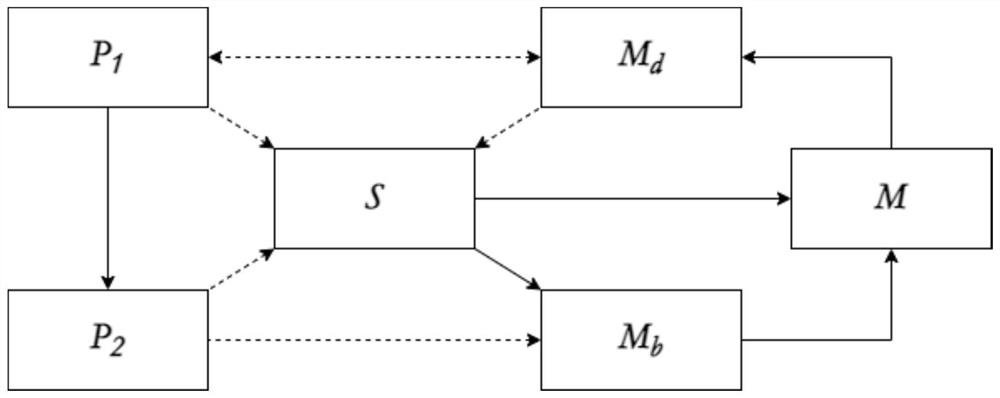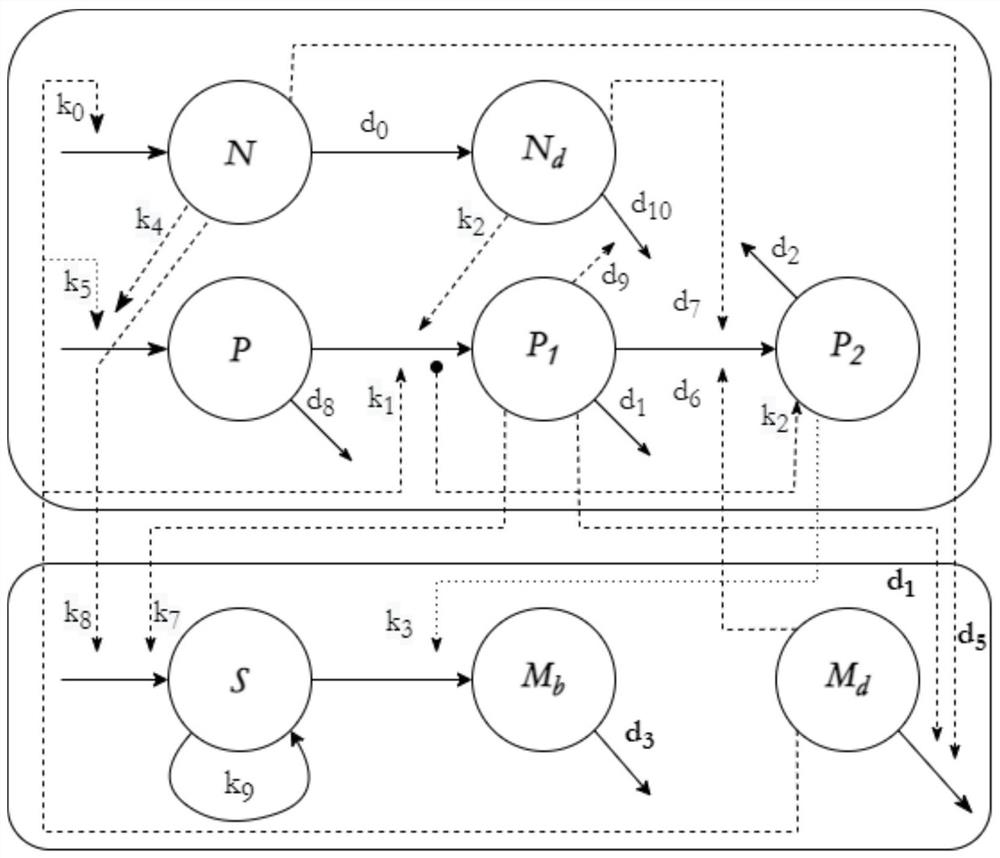Method for modeling skeletal muscle regeneration model under action of immune system
An immune system and model modeling technology, applied in biological systems, medical simulation, bioinformatics, etc., can solve problems such as accidental damage and recovery process of non-diseased muscle tissue, and skeletal muscle regeneration models cannot be simulated. The effect of accelerating muscle regeneration
- Summary
- Abstract
- Description
- Claims
- Application Information
AI Technical Summary
Problems solved by technology
Method used
Image
Examples
specific Embodiment approach 1
[0011] Embodiment 1: A method for modeling a skeletal muscle regeneration model under the action of the immune system includes the following steps
[0012] Step 1: Establish a skeletal muscle regeneration model based on the accidental injury of human non-diseased muscle tissue and the subsequent recovery process;
[0013] Step 2: Based on the regulation of the immune system and its secreted factors on muscle cells, a skeletal muscle regeneration model based on the action of the immune system was established.
specific Embodiment approach 2
[0014] Embodiment 2: This embodiment is different from Embodiment 1 in that: the specific process of establishing a skeletal muscle regeneration model in the step 1 is as follows:
[0015] During skeletal muscle regeneration, six cellular interactions control the dynamic healing process: classically activated macrophages (P 1 ), alternately activated macrophages (P 2 ), satellite cells (S), myoblasts (M b ), healthy muscle fibers (M), and dead muscle fibers (M d ), each cell type represents a uniform concentration of nuclei within a given volume. The interaction between them is as figure 1 shown, the solid line represents the actual transfer of cells from one group to another, while the dashed line represents the interaction between two different cell populations;
[0016] Classically activated macrophages (P 1 ) with time, the ordinary differential equation is:
[0017]
[0018] In the formula, a 1 , a 2 , r 1 , d 1 represent the influx rate of classically activa...
specific Embodiment approach 3
[0034] Embodiment 3: This embodiment is different from Embodiment 1 or 2 in that: in the second step, based on the regulation of the immune system and its secreted factors on muscle cells, a skeletal muscle regeneration model based on the action of the immune system is established for:
[0035] During the regeneration of skeletal muscle under the action of the immune system, such as figure 2 shown, the immune cells involved in muscle regeneration are active neutrophils (N), lysed neutrophils (N d ), monocytes (P), classically activated macrophages (P 1 ), alternately activated macrophages (P 2 ). The affected muscle cells are satellite cells (S), myonuclei (M). b ), dead or damaged myonuclei (M d );
[0036] The ordinary differential equation of active neutrophils (N) over time is:
[0037]
[0038] In the formula, k 0 , d 0 represent the maximum rate of active neutrophil influx due to dead or damaged myonuclei, and the natural mortality of active neutrophils, res...
PUM
 Login to View More
Login to View More Abstract
Description
Claims
Application Information
 Login to View More
Login to View More - R&D
- Intellectual Property
- Life Sciences
- Materials
- Tech Scout
- Unparalleled Data Quality
- Higher Quality Content
- 60% Fewer Hallucinations
Browse by: Latest US Patents, China's latest patents, Technical Efficacy Thesaurus, Application Domain, Technology Topic, Popular Technical Reports.
© 2025 PatSnap. All rights reserved.Legal|Privacy policy|Modern Slavery Act Transparency Statement|Sitemap|About US| Contact US: help@patsnap.com



